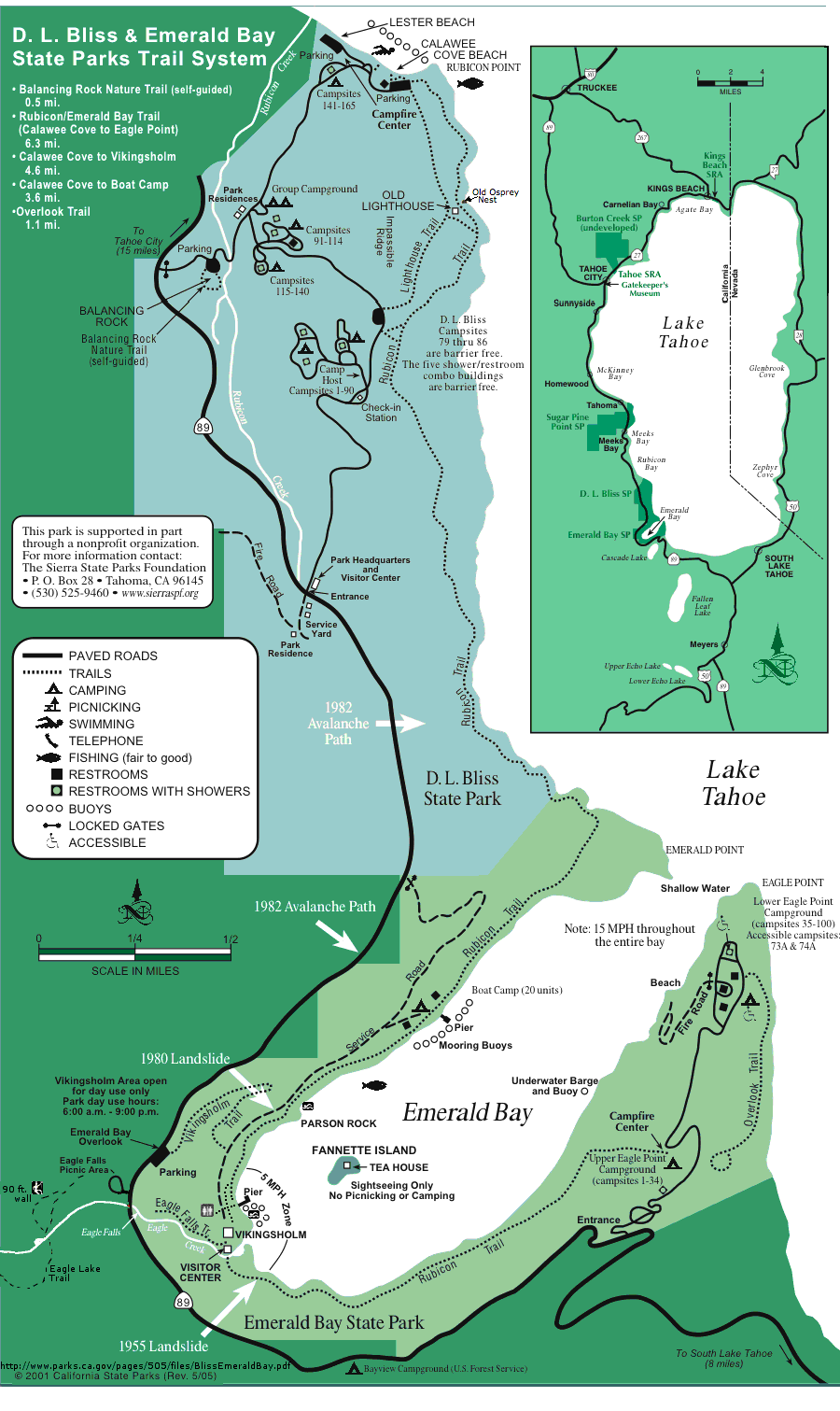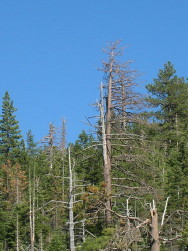 Hiking
Hiking
 Trails
Trails
 D. L. Bliss & Emerald Bay State Parks Trail System
Contact
D. L. Bliss & Emerald Bay State Parks Trail System
Contact
Tahoe
 Hiking
Hiking
 Trails
Trails
 D. L. Bliss & Emerald Bay State Parks Trail System
Contact
D. L. Bliss & Emerald Bay State Parks Trail System
Contact
|
 Source: www.parks.ca.gov/pages/505/files/BlissEmeraldBay.pdf Zoom out to Tahoe SW | Topo for Eagle and Velma Lakes
Rubicon Trail Osprey - Bald Eagles: There are several Eagle and Osprey nests around Emerald Bay and along the Rubicon Trail. An Osprey nest at the top of a dead tree down by the water is visable from the Rubicon Trail a little way after you go by the cliffs. A large eagle nest (which may be populated by Ospreys) is at the north entrance to Emerald Bay. It is visable by boat and from the opposite side at Eagle Point, but not from the Rubicon Trail. Nests are at the top of large diameter dead topped trees and snags with robust branches.
Many of the nests are not populated. They are best observed with a high powered scope from the opposite shore.
A 2004 TRPA Draft Environmental Impact Statement states: | |
Eagles Nest with Osprey View from entrance to Emerald Bay Can be seen from Eagle Point also Source: Meeka's site |

|
|
Links: D.L. Bliss State Park Emerald Bay State Park
Bliss 530 525-7277 | |